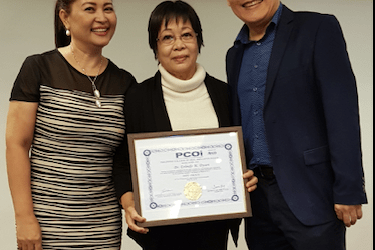Written by Dr. Erlinda M. Dyson DMD
For over a Century we have witnessed breakthroughs in Modern Medicine that rivals our own imagination, from the invention of Penicillin – the world’s first antibiotic, to today’s restorative and regenerative treatments in all fields of medicine from 3d printed organs and tissue, we revisit health extension with promising technologies that may reshape the future of medicine.
Stem cell research is one technology that has taken great strides over the last few years, concentrated with a medical centrifuge stem cells can be collected as well as other regenerative and supportive cells such as leukocytes, cytokines, megakaryocytes, platelets/thrombocytes, and fibrin, this concentrate of stem cells, platelets, and fibrin is the foundation of all forms of Autologous Hemobiologic treatments, this technology is further refined with a “medifuge”, a specialized medical centrifuge designed to alter centrifugation and drastically improve results, which gave rise to numerous regenerative techniques that are now used in various medical applications from skin grafts, hair restoration, anti-aging therapy, soft-tissue regeneration, sinus regeneration, and accelerated bone regeneration, breaking records in healing times and reducing patient trauma with non-invasive procedures.
Brief History of Modern Bone Regeneration Techniques –
Bone grafts were once the only method for rebuilding bone in specific areas of the body, this requires surgery in which bone is collected from the hip or jaw and transplanted to a desired site, this poses some health risks and trauma and has been reported to be moderately unsuccessful due either to rejection, infection, or simple biology – hip bone has its own DNA that tells it what it is, when it is transplanted to the jaw the body will know and will return most of the bone back to the hip, in most cases the amount of grafted bone that remains over a one year period rarely exceed 30%, at which more bone grafts would be necessary to reach the optimal height and width to accept dental implant surgery, in many cases it is necessary to graft more bone than is actually needed because of the expected bone resorption accompanied by old fashioned bone graft surgery, this traumatizes the patient as well as potentially compromising the structural integrity of the grafted hip bone and is considered invasive by today’s standards.
Eventually this technique would be superseded by “Bone Regeneration” which takes advantage of freeze-dried deproteinized bone granules or cubes in the form of Allograft and Bovine bone, one offering better resorbability and the other offering better scaffolding support and they are often used in tandem, the harvested bone is deproteinized in advance to prevent biological rejection as well as any possibility of HIV transmission, and later on synthetic bone regeneration which uses artificial bone was introduced, all of which haveproperties that make them invaluable to modern bone regeneration treatments even today
And more recently Autologous Tissue/Bone regeneration technologies have been developed, the current techniques for different applications are PRP(platelet rich plasma), PRF(platelet rich fibrin), PRGF(platelet rich growth factor) CGF(concentrated growth factor), with CGF having the highest concentrations of stem cells and fibrin in several controlled studies, the technology as well as its offshoot “Sticky-bone” is currently the most effective in dental restoration treatments.
CGF(concentrated growth factor) is a fairly new medical technique that has the highest concentration of stem cells and fibrin and has no chance of biological rejection, it encourages tissue and bone regeneration via osteoinduction, a process by which osteogenesis is induced that attracts immature cells and the stimulation of these cells to develop into preosteoblasts, it can be used to heal soft tissue such as the sinus membrane, incisions of the gum, as well as muscles like the cheeks and tongue with significantly improved healing time, and can be used in place of collagen membranes, it is primarily used to restore bone density and health over a shorter period than traditional bone-grafts.
its offshoot “sticky-bone” uses CGF technology with Allograft or Bovine Bone to form an Autologous Hemobiologic Super-bone that can osseointegrate two to three times faster than current bone regeneration techniques with an incredibly high success rate due to its intimacy with the patient’s body, having no chance of biological rejection and little chance of infection, sticky-bone has been used by dental implantologists in seemingly impossible ways such as being used to enclose a largely exposed side of an implant during surgery with cohesive osteoinduction occurring within a 3 to 4 month period over the usual 6 months to 1 year in normal dental implant patient cases, however because the technology is still new the results as well as recovery time between patients may vary.�


